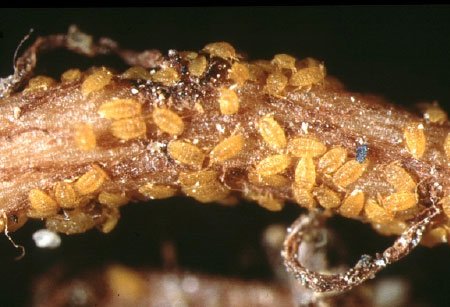Wines and vines of Romania: about phylloxera, the great enemy
Wine is the nectar of the vines, if we want to be pseudo poetical about it. Ah, you will no doubt ask, there are plenty of vines out there, so which ones? Vitis vinifera if we want to be precise and why wouldn’t we? Vitis vinifera is responsible for all that which a human with some taste considers good wine.

Sounds good to me! Just plant that shit and enjoy a glass or three!
Not so fast, oh hasty one. Were it only that simple. It takes a lot of work you see to get a vine to produce the proper grapes from a proper wine. And you cannot simply plant that shit. If you do, our old nemesis phylloxera might come a-calling.
Well what the hell is that? It’s an insect, a bug, a parasite, vermin. Sounds gross! Oh it is!
Grape phylloxera is a pest originally native to North America.It is pale yellow insect which, instead of doing productive work, spends its days sucking the sap from grapevine roots. Long story short, this kills the vine. American vine species have evolved (or were created if you swing that way) some natural defenses against phylloxera and as such can resit it.
So plant those! Well those do not give good wine. OK, smart guy, then what is the solution?
As phylloxera has no cure, the only solution to keep drinkin’ the good stuff is to graft vitis vinifera on phylloxera resistant American root-stock. So that is how you plant a vine.
OK, now getting to the Romanian experience, the bug showed it’s ugly face round this parts around 1884. At that time Romania, which did not include Transylvania so it was quite smaller then today, had at least 200.000 hectares of grapevines. Most villages and towns had their own vines, due to the difficulty of transporting things on dirt roads. I spoke of this in a previous post which you should read.

Like in all places, the disease devastated the vines, more than half being destroyed. Romania being a poor-ish country had, difficulty replanting with vines grafted to American rootstock. As such by 1910 only some 15-20 thousand hectares had been replanted. This was greatly affected the local drinking habits.
Due to the high price of replanting, a not great but passable intermediary solution was used. Direct producing hybrid vines. Hybrids of European and American vines, which were resistant to phylloxera and created a drinkable if bad wine, were planted. While the producers which sold wine tried to replant grafted vines, most people who made wine for personal consumption planted hybrids. The grew, they were productive, and made a drink that got you buzzed. Good enough for many. This trend continued through the 20th century.
Now, more than 100 years later according to the national statistics institute there are 180 thousand hectares of vines in Romania , out of which about half, 90 are grafted vitis vinifera. So 150 years after phylloxera the country has half the vines capable of producing good wine. And the current territory also includes Transylvania.
Sadly, many people who make wine for their own consumption still plant hybrids which create a good natural country wine. Because swill does not have the same ring to it.
Great powt @ionescur and yes this is a common enemy of the vine! Followed to read more and I am olso from Romania!